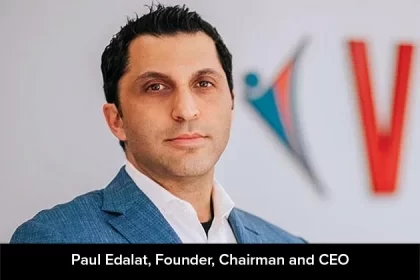In an era defined by unprecedented complexity and interconnectivity, today’s leaders face challenges that transcend traditional organizational boundaries. Climate change, technological disruption, and global health crises represent just a few examples of the systemic challenges that organizations now navigate.
These issues cannot be addressed through conventional leadership approaches that focus on isolated problems within organizational silos. Instead, they demand systemic change that addresses root causes across interconnected networks of relationships, policies, and practices.
This article explores why mastering systemic change has become an essential leadership competency and provides practical guidance for developing this crucial skill set.
Understanding the Scope of Systemic Change
Systemic change recognizes that organizations and communities operate as dynamic, interconnected systems rather than linear mechanisms. When leaders approach challenges systemically, they acknowledge several fundamental principles:
- Interventions in one area inevitably affect other parts of the system, sometimes in unexpected ways
- Quick fixes often trigger compensating responses that undermine long-term success
- Sustainable solutions require addressing underlying structures and mental models, not just visible events
- Diverse perspectives are essential for understanding the full complexity of systemic issues
According to Forbes, in a world where change is the only constant, transformational leaders are those who embrace innovation. This innovation extends beyond products to include processes, strategies, and new ways of thinking. Companies like Apple and Amazon have remained industry leaders by promoting creativity and openness to new ideas.
Leaders who cultivate systems thinking, who can see patterns and understand feedback loops, are better equipped to navigate complexity. By identifying leverage points within systems, they can drive lasting, meaningful change rather than settling for temporary solutions.
Why Traditional Leadership Falls Short
Traditional leadership approaches often fall short when tackling today’s complex challenges. One key limitation is compartmentalized expertise. Organizations are still structured around specialized departments, making cross-disciplinary collaboration difficult.
Yet, solving systemic issues, like climate change, requires coordinated efforts among scientists, policymakers, technologists, economists, and communities. Leadership models that reinforce silos hinder this necessary integration.
Another issue is the overemphasis on short-term metrics. Companies may hit cost-cutting targets by deferring maintenance or lowering product quality, only to face larger problems later. True systemic leadership balances short-term demands with future sustainability.
Linear planning models also struggle in today’s volatile, uncertain, complex, and ambiguous (VUCA) environment. Adaptive strategies that embrace flexibility, learning, and evolving goals are essential.
According to EY, global supply chains have similarly been built for short-term efficiency over resilience, often ignoring environmental costs. These systems were designed for stable conditions and open trade but failed to account for volatility, sustainability, or resource scarcity.
As a result, these supply chains now struggle to adapt to disruptions, environmental demands, and evolving global priorities. This highlights the critical need for leaders who can redesign operations with a focus on long-term resilience, adaptability, and sustainability.
Developing Systemic Change Leadership Capabilities
Building capacity for leading systemic change represents both a personal and organizational development journey. Several pathways support this evolution:
Advanced Education for Systemic Leadership
Advanced education plays a vital role in preparing leaders for systemic change. Programs like the Doctor of Education (EdD) in Leadership are designed to equip practitioners with the skills to drive meaningful transformation across organizations.
Unlike traditional PhD programs focused on theoretical research, EdD in Leadership programs take a more applied approach. They emphasize using research to address real-world leadership challenges and focus on developing practical strategies for navigating and leading complex change.
According to Spalding University, these programs offer students a fresh perspective on becoming transformative leaders. Courses are delivered one at a time in an intensive format, allowing professionals to continue working full-time while earning their degree.
This flexible format supports working leaders in developing the systems-thinking mindset necessary for adaptive leadership in a rapidly evolving world.
Experiential Learning and Reflective Practice
While formal education provides valuable frameworks, systemic change leadership capabilities develop primarily through reflective engagement with complex challenges.
Leaders cultivate these capacities by:
- Participating in cross-functional initiatives that span traditional boundaries
- Engaging with diverse stakeholders, particularly those with marginalized perspectives
- Experimenting with small-scale interventions and carefully examining their ripple effects
- Developing regular practices for reflection on both successes and failures
- Seeking feedback from multiple perspectives on the systemic impacts of decisions
Organizations can accelerate this development by creating psychological safety for experimentation, normalizing continuous learning processes, and rewarding collaborative approaches to complex challenges.
Essential Practices for Leading Systemic Change
Beyond developing personal capabilities, leaders can employ specific practices to catalyze systemic change:
Convene Diverse Perspectives
Addressing systemic challenges demands convening diverse stakeholders. As Business.com notes, superficial diversity statements fall short. Genuine progress requires organizations, like Accenture or Starbucks, to truly ensure varied voices are listened to and respected. This can be done by making real changes to their inclusion initiatives.
Effective systemic leaders create forums where these diverse perspectives can constructively engage, acknowledging power dynamics and uplifting marginalized voices. Skilled facilitation is key, guiding participants to co-create innovative solutions.
Prototype and Learn
Effective leaders adopt iterative approaches that emphasize rapid prototyping, careful observation of results, and continuous adaptation. These experimental interventions serve as probes that reveal system dynamics while generating practical learning about what works.
Rather than attempting to control outcomes precisely, leaders focus on establishing enabling conditions and evolution pathways. This allows beneficial patterns to emerge and spread organically.
Frequently Asked Questions
Why do we need a system change?
We need a systems change to address complex, interconnected problems that cannot be solved with isolated fixes. Traditional approaches often treat symptoms, not root causes. Systems change promotes long-term solutions by transforming underlying structures, behaviors, and mindsets, creating more resilient, equitable, and sustainable outcomes.
What makes a good system leader?
A good system leader promotes collaboration, embraces complexity, and sees the bigger picture. They convene diverse voices, navigate power dynamics, and promote shared learning. By focusing on root causes rather than quick fixes, they build trust, adapt to change, and drive sustainable, meaningful transformation across interconnected systems.
What is the least effective leadership style, and what makes it ineffective?
Autocratic leadership is often the least effective, especially in complex or dynamic environments. It relies on top-down decision-making, discourages collaboration, and limits creativity. This style can lead to low morale, reduced innovation, and disengagement, as team members feel undervalued and are less likely to contribute ideas.
As we navigate increasingly turbulent environments, the ability to catalyze systemic change will distinguish truly impactful leadership from mere management. By developing these capabilities, leaders position themselves to address our most pressing challenges. In doing so, they help create organizations and communities that can thrive amid complexity.










